
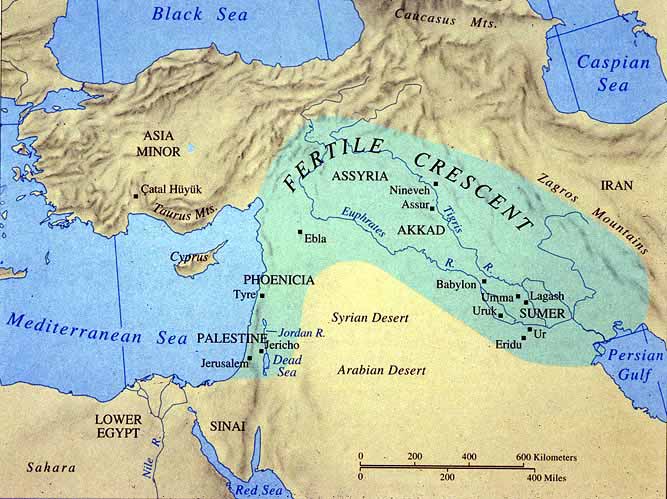


�Ur was an ancient city in southern Mesopotamia, located near the mouth (at the time) of the Euphrates and Tigris rivers on the Persian Gulf and close to Eridu. It is considered to be one of the earliest known civilizations in world history. Because of marine regression, the remains are now well inland in present-day Iraq, south of the Euphrates on its right bank, and named Tell el-Mukayyar, near the city of Nasiriyah south of Baghdad.
Ur was an important city-state in ancient Sumer located at the site of modern Tell el-Muqayyar in Iraq's Dhi Qar Governorate. Once a coastal city near the mouth of the Euphrates on the Persian Gulf, Ur is now well inland, south of the Euphrates on its right bank, 16 kilometres (9.9 mi) from Nasiriyah.
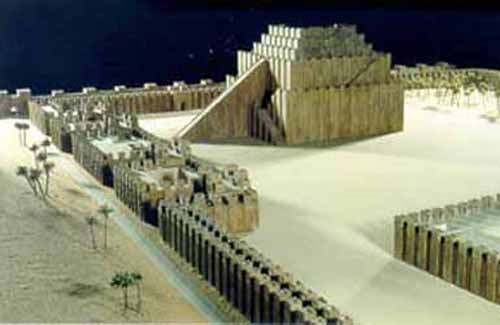
Ziggurat of Ur
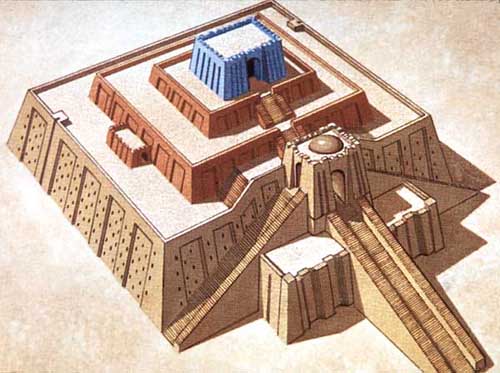
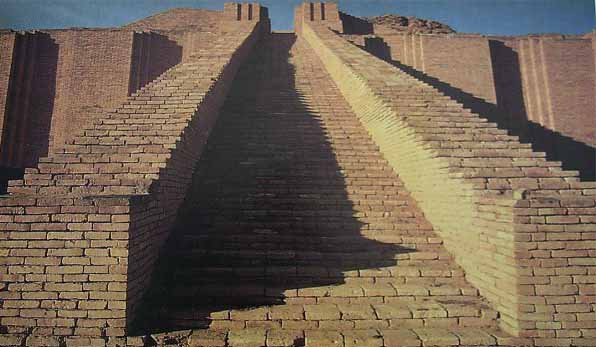
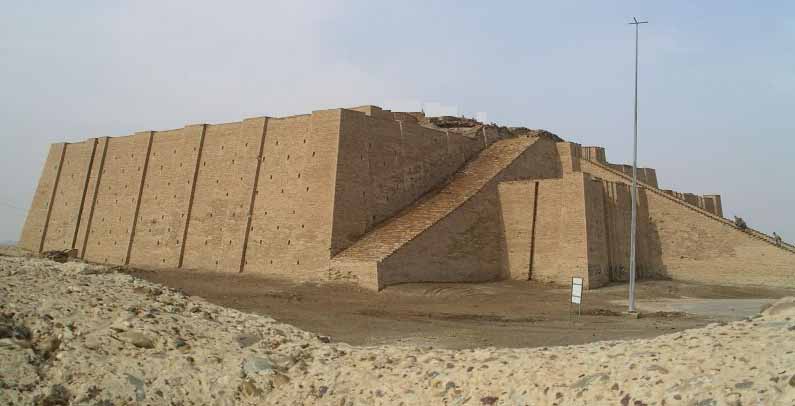
The site is marked by the ruins of a ziggurat, still largely intact, and by a settlement mound. The ziggurat is a temple of Nanna, the moon deity in Sumerian mythology, and has two stages constructed from brick: in the lower stage the bricks are joined together with bitumen, in the upper stage they are joined with mortar. The Sumerian name for this city was Urim.
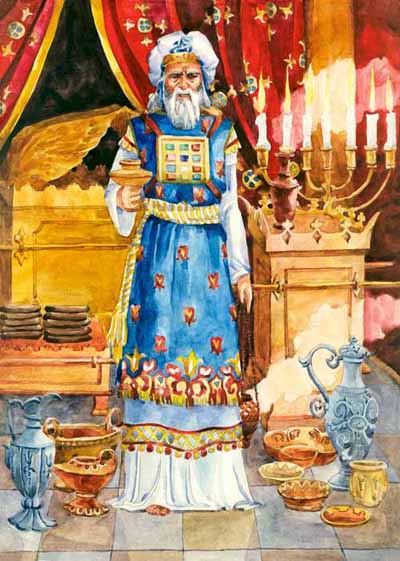
Urim and Thummim
Archaeologists have discovered evidence of an early occupation at Ur during the Ubaid period. These early levels were sealed off with a sterile deposit that was interpreted by excavators of the 1920s as evidence for the Great Flood of the book of Genesis and Epic of Gilgamesh . It is now understood that the South Mesopotamian plain was exposed to regular floods from the Euphrates and the Tigris, with heavy erosion from water and wind. The further occupation of Ur only becomes clear during its emergence in the third millennium BC (although it must already have been a growing urban center during the fourth millennium). The third millennium BC is generally described as the Early Bronze Age of Mesopotamia, which ends approximately after the demise of the Third Dynasty of Ur.
There are two main sources which inform scholars about the importance of Ur during the Early Bronze Age. The first is a large body of cuneiform documents, mostly from the empire of the so-called Third Dynasty of Ur at the very end of the third millennium. This was the most centralized bureaucratic state the world had yet known. Concerning the earlier centuries, the Sumerian King List provides a tentative political history of ancient Sumer.
The second source of information is archaeological work in modern Iraq. Although the early centuries (first half of the third millennium and earlier) are still poorly understood, the archaeological discoveries have shown unequivocally that Ur was a major urban center on the Mesopotamian plain. Especially the discovery of the Royal Tombs have confirmed its splendor. These tombs, which date to the Early Dynastic IIIa period (approximately in the 25th or 24th century BC), contained immense amounts of luxury items made out of precious metals, and semi-precious stones all of which would have had to been imported from long distances (Iran, Afghanistan, Pakistan, Turkey, the Persian Gulf). This up to then unparalleled wealth is a testimony of Ur's economic importance during the Early Bronze Age.
Archaeological research of the region has also contributed greatly to our understanding of the landscape and long-distance interactions that took place during these ancient times. We know that Ur was the most important port on the Persian Gulf, which extended much further inland than it does today. All the wealth which came to Mesopotamia by sea had to pass through Ur.
So far evidence for the earliest periods of the Early Bronze Age in Mesopotamia is very limited. That Ur was an important urban centre already then seems to be indicated by a type of cylinder seal called the City Seals. These seals contain a set of proto-cuneiform signs which appear to be writings or symbols of the name of city-states in ancient Sumer. Many of these seals were found in Ur, and the name of Ur is prominent on them.
The third dynasty was established when the king Ur-Nammu came to power, ruling between ca. 2047 BC and 2030 BC. During his rule, temples, including the ziggurat, were built, and agriculture was improved through irrigation. His code of laws, the Code of Ur-Nammu (a fragment was identified in Istanbul in 1952) is one of the oldest such documents known, preceding the code of Hammurabi by 300 years. He and his successor Shulgi were both deified during their reigns, and after his death he continued as a hero-figure: one of the surviving works of Sumerian literature describes the death of Ur-Nammu and his journey to the underworld About that time, the houses in the city were two-storied villas with 13 or 14 rooms, with plastered interior walls.
Ur-Nammu was succeeded by Shulgi, the greatest king of the Third Dynasty of Ur who solidified the hegemony of Ur and reformed the empire into a highly centralized bureaucratic state. Shulgi ruled for a long time (at least 42 years) and deified himself halfway through his rule.
The Ur empire continued through the reigns of three more kings, Amar-Sin, Shu-Sin, and Ibbi-Sin. It fell around 1940 BC to the Elamites in the 24th regnal year of Ibbi-Sin, an event commemorated by the Lament for Ur.
According to one estimate, Ur was the largest city in the world from c. 2030 to 1980 BC. Its population was approximately 65,000.
The city of Ur lost its political power after the demise of the Third Dynasty of Ur. Nevertheless its important position which kept on providing access to the Persian Gulf ensured the ongoing economical importance of the city during the second millennium BC. The splendour of the city, the might of the empire, the greatness of king Shulgi, and undoubtedly the efficient propaganda of the state endured throughout Mesopotamian history. Shulgi was a well known historical figure for at least another two thousand years, while historical narratives of the Mesopotamian societies kept names, events, and mythologies in remembrance.
In the 6th century BC there was new construction in Ur under the rule of Nebuchadnezzar II of Babylon. The last Babylonian king, Nabonidus, improved the ziggurat. However the city started to decline from around 550 BC and was no longer inhabited after about 500 BC, perhaps owing to drought, changing river patterns, and the silting of the outlet to the Persian Gulf.
As of 1954, there was a railway station here. The Bagdad railroad line connected to Basra, 120 miles (190 km) to the south.
Ur is considered by many to be the city of Ur Kasdim mentioned in the Book of Genesis as the birthplace of the patriarch Abram (Abraham). This identification is, however, disputed. Ur was a powerful sophisticated polytheist city located west of modern day Basra in southern Iraq near the banks of the Euphrates river that prospered more than 2000 years before the birth of Christ and thought to be the place where Abraham spent his early years.
Ur is mentioned four times in the Tanakh or Old Testament, with the distinction "of the Kasdim/Kasdin" - traditionally rendered in English as "Ur of the Chaldees", referring to the Chaldeans, who were already settled there by around 900 BC. In Genesis, the name is found in 11:28, 11:31 and 15:7. In Nehemiah 9:7, a single passage mentioning Ur is a paraphrase of Genesis.
The Book of Jubilees states that Ur was founded in 1688 Anno Mundi (year of the world) by 'Ur son of Kesed, presumably the offspring of Arphaxad, adding that in this same year, wars began on Earth.
In the mid-17th century, the site was visited by Pietro della Valle, who recorded the presence of ancient bricks stamped with strange symbols, cemented together with bitumen, as well as inscribed pieces of black marble that appeared to be seals.
The first excavation was made by British consul J.E. Taylor, who partly uncovered the ziggurat. Clay cylinders found in the four corners of the top stage of the ziggurat bore an inscription of Nabonidus (Nabuna'id), the last king of Babylon (539 BC), closing with a prayer for his son Belshar-uzur (Bel-sarra-Uzur), the Belshazzar of the Book of Daniel. Evidence was found of prior restorations of the ziggurat by Ishme-Dagan of Isin and Gimil-Sin of Ur, and by Kuri-galzu, a Kassite king of Babylon in the 14th century BC. Nebuchadnezzar also claims to have rebuilt the temple. Taylor further excavated an interesting Babylonian building, not far from the temple, part of an ancient Babylonian necropolis.
All about the city he found abundant remains of burials of later periods. Apparently, in the later times, owing to its sanctity, Ur became a favourite place of sepulchure, so that even after it had ceased to be inhabited it still continued to be used as a necropolis.
After Taylor's time the site was visited by numerous travelers, almost all of whom have found ancient Babylonian remains, inscribed stones and the like, lying upon the surface. The site was considered rich in remains, and relatively easy to explore.
Excavations from 1922 to 1934 were funded by the British Museum and the University of Pennsylvania and led by the archaeologist Sir Charles Leonard Woolley. A total of about 1,850 burials were uncovered, including 16 that were described as "royal tombs" containing many valuable artifacts, including the Standard of Ur. Most of the royal tombs were dated to about 2600 BC. The finds included the unlooted tomb of a queen thought to be Queen Puabi - the name is known from a cylinder seal found in the tomb, although there were two other different and unnamed seals found in the tomb. Many other people had been buried with her, in a form of human sacrifice. Near the ziggurat were uncovered the temple E-nun-mah and buildings E-dub-lal-mah (built for a king), E-gi-par (residence of the high priestess) and E-hur-sag (a temple building).
Outside the temple area, many houses used in everyday life were found. Excavations were also made below the royal tombs layer: a 3.5m thick layer of alluvial clay covered the remains of earlier habitation, including pottery from the Ubaid period, the first stage of settlement in southern Mesopotamia. Woolley later wrote many articles and books about the discoveries.
Most of the treasures excavated at Ur are in the British Museum and the University of Pennsylvania Museum of Archaeology and Anthropology.
Archaeological names of periods of habitation include:
There is no modern village at Ur, so it has never received many tourist visitors, although it has been made accessible to them. Saddam Hussein established a military base adjacent to the site, and it was wholly inaccessible even to the hardiest travelers, on security grounds, after the Iran-Iraq war.
In early 1990, a handful of travelers were permitted to tour the site, escorted by soldiers, but they were not permitted to climb the ziggurat (as they were elsewhere) because of its commanding view of the military base and all the country surrounding it. Shortly after this, the Iraqi invasion of Kuwait made further visits impossible, and great concern was expressed at the proximity of the military base to the archaeological site at a time of war. These concerns revived when Iraq was invaded in 2003 by US-led coalition forces in order to overthrow Saddam Hussein.
Today some of the areas that were cleared during excavations are sanded over again. The site is set up for tourism, however not on the scale exhibited by some sites in Egypt. Electricity is at the site and several lines of poles go through the site area. There are a few steel poles about 25 m high, near the Great Ziggurat, that seem to be intended for lighting of the site; however there are no actual lamps on them. Tourist information signs are also found at the site in Arabic. There are a few shaded resting places available for tourists located close to the entry of the site.
Since the Iraqi war, westerners have been coming here again, in the form of Coalition forces. The road up to the site is covered with little shops, selling everything from Saddam Hussein money bills to genuine rugs. There is only one shop on the actual site.
One can visit the whole site, view any grave or climb any peak without restrictions. The huge United States / Coalition forces Ali Base (formerly called Tallil Air Base), is located nearby.
The Great Ziggurat is fully cleared and stands as the best-preserved and only major structure on the site. One can walk around it, and will observe very little damage. Only the top is covered with debris and is at times a confusing mix of loose stones, broken pottery and partial reconstruction.
The famous Royal tombs, also called the Neo-Sumerian Mausolea, located about 250m south-east of the Great Ziggurat, in the corner of the wall that surrounds the city - a wall difficult to locate today unless one knows it is there - are nearly totally cleared. Parts of the tomb area appear to be in need of structural consolidation or stabilization.
One can see cuneiform (Sumerian writing) on many walls, some entirely covered in script stamped into the mud-bricks. It is sometimes difficult to see the text, but on close inspection, it covers most surfaces.
Modern graffiti has also found its way to the graves, usually in the form of names made with color pens (sometimes they are carved). The Great Ziggurat itself has far more graffiti, mostly lightly carved into the bricks.
The graves are completely empty with nothing left in them. It is possible to climb into and out of all of them.
The whole site is covered completely with broken pottery. One can practically not set foot anywhere without stepping on broken pottery. It even surpasses Saqqara in Egypt in that regard, and is easily on the level of Dendera (a much smaller area). They are mostly small pieces, but once in a while there are also large pieces. Some have colors and paintings on them. One can see that some of the 'mountains' of broken pottery are of newer creation, and are debris removed from excavations.
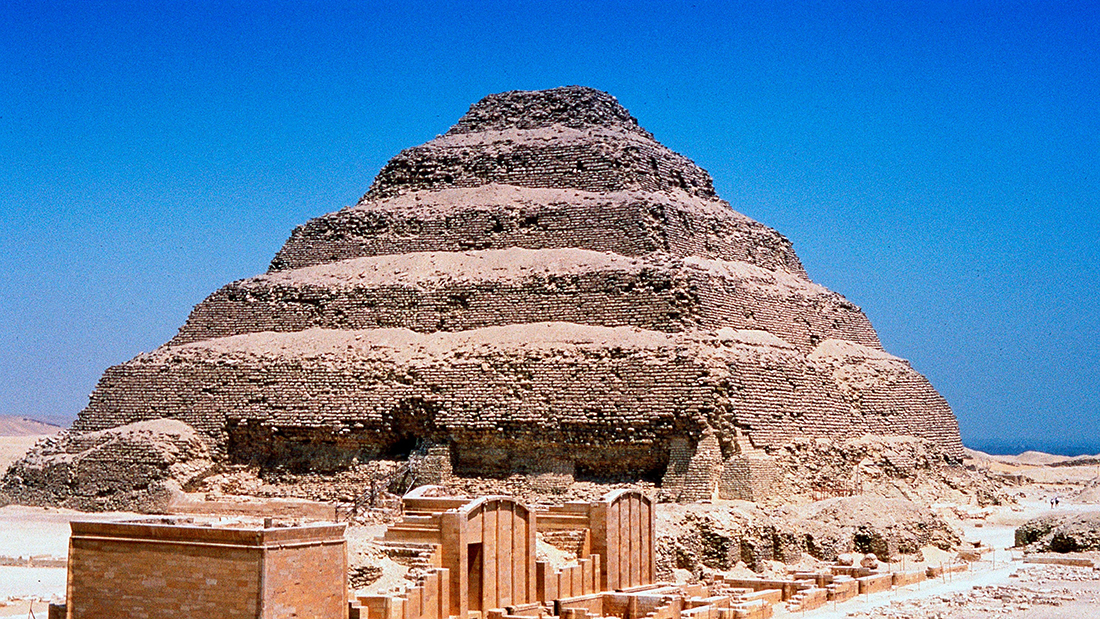
Similar 'mountains' can be seen at Egyptian sites such as the Saqqara Pyramids, the Giza Pyramids, and Dendera.
Pottery debris is inside many of the walls of the royal tombs area. It can only be speculated whether this is of ancient making or modern restoration, but it is a fact that they are, literally, filled up with pottery debris.
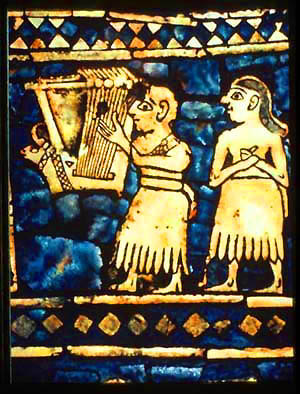
The Lyres of Ur or Harps of Ur are considered to be the worlds oldest surviving stringed instruments. In 1929, archaeologists discovered pieces of three lyres and one harp in Ur, located in what was Ancient Mesopotamia and is contemporary Iraq. They are over 4,500 years old.
Leonard Woolley led the team that discovered the instruments as part of his excavation of the Royal Cemetery of Ur from 1922 and 1934. The instrument remains were restored and distributed between the museums that took part in the digs.
The 3 Lyres:
The "Queen's Lyre" is one of two that he found in the grave of Queen Pu-abi. It is held in the British Museum.
A silver Boat-shaped Lyre and a lyre with the head of a bull made of gold sheet and a lapis lazuli beard are held by the University of Pennsylvania Museum of Archaeology and Anthropology.
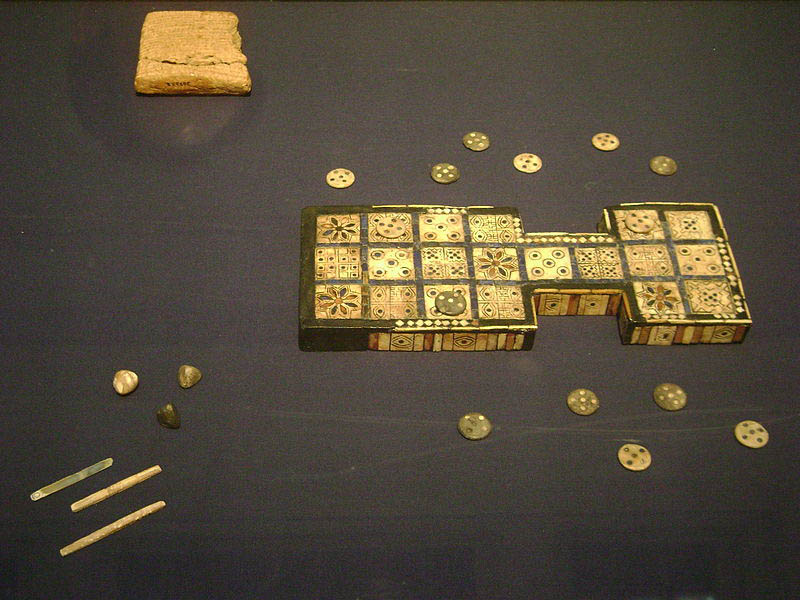
Created 2600 BC - 2400 BC
The Royal Game of Ur, also known as the Game of Twenty Squares, refers to two game boards found in the Royal Tombs of Ur in Iraq by Sir Leonard Woolley in the 1920s. The two boards date from the First Dynasty of Ur, before 2600 BC, thus making the Royal Game of Ur one of the older examples of board gaming equipment found, although Senet boards found in Egyptian graves predate it as much as 900 years. The game is still played. One of the two boards is exhibited in the collections of the British Museum in London.
The Royal Game of Ur was played with two sets, one black and one white, of seven markers and three tetrahedral dice. The rules of the game as it was played in Mesopotamia are not known but there is a reliable reconstruction of gameplay based on a cuneiform tablet of Babylonian origin dating from 177–176 BC by the scribe Itti-Marduk-Balatu.It is universally agreed that the Royal Game of Ur, like Senet, is a race game. Both games may be predecessors to the present-day backgammon.